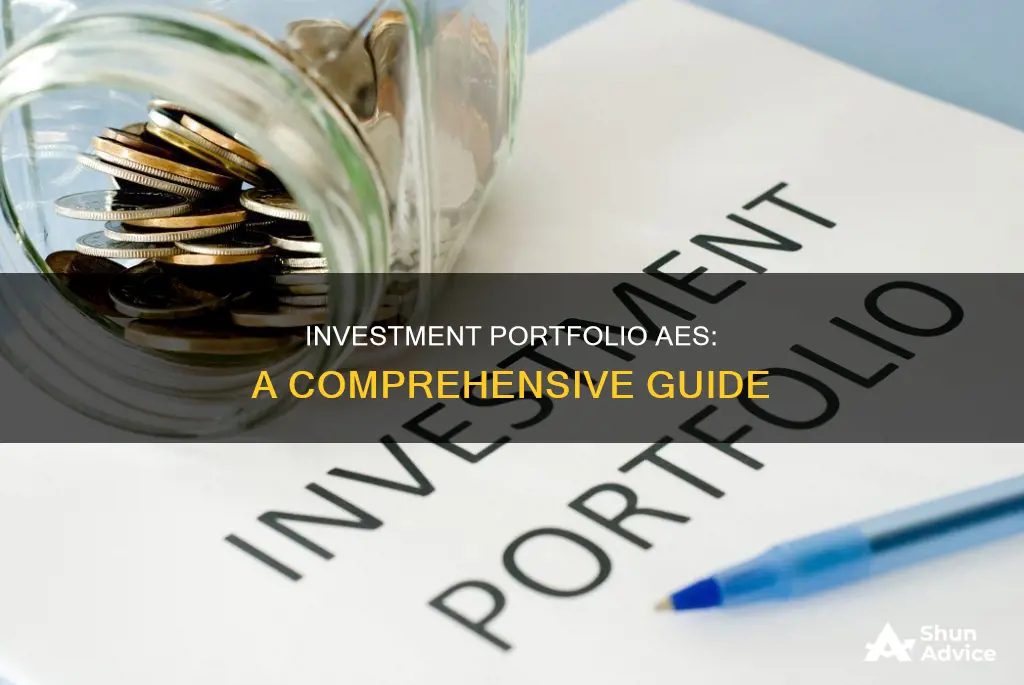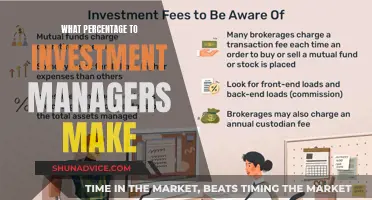
An investment portfolio is a collection of financial assets owned by an individual or entity. The term comes from the Italian word 'portafoglio', meaning a case for carrying loose papers. It refers to a diverse range of investments, from stocks, bonds, mutual funds and exchange-traded funds (ETFs) to real estate, cash, gold, art and even cryptocurrencies.
The goal of an investment portfolio is to build wealth over time, and it is a cornerstone of investing in the markets. The process of building a portfolio involves understanding your risk tolerance, diversifying your assets and regularly rebalancing your asset allocation to ensure it remains in line with your financial goals and risk appetite.
Portfolios can be tailored to different investment strategies, time horizons and risk tolerances. For example, an aggressive portfolio seeks high returns and assumes greater risks, while a defensive portfolio focuses on lower-risk investments to preserve capital.
The ability to construct and manage an investment portfolio is an important financial skill, and it is a critical component of long-term financial security.
| Characteristics | Values |
|---|---|
| Definition | A collection of financial investments |
| Types of assets | Stocks, bonds, mutual funds, exchange-traded funds (ETFs), real estate, cash alternatives, commodities, cash, cash equivalents, art, cryptocurrency, and more |
| Diversification | Different investment assets, different types of stocks and bonds |
| Risk tolerance | How willing an investor is to accept the chance of losing money in pursuit of greater returns |
| Investment objectives | Goals for the future |
| Time horizon | How long an investor has to invest |
What You'll Learn
- Investment portfolios can include a wide range of assets, such as stocks, bonds, real estate, and commodities
- Diversification is a key concept in managing investment portfolios, reducing risk and maximising returns
- Portfolios should be tailored to an individual's risk tolerance, investment objectives, and time horizon
- There are different types of portfolios, including growth, income, value, defensive, and blended
- Building an investment portfolio involves deciding on a strategy, choosing investments, and regularly rebalancing

Investment portfolios can include a wide range of assets, such as stocks, bonds, real estate, and commodities
An investment portfolio is a collection of financial investments or assets owned by an individual or entity. Portfolios can include a wide range of assets, such as stocks, bonds, real estate, and commodities.
Stocks and bonds are generally considered the core building blocks of a portfolio, but this is not always the case. Portfolios can also include alternative investments such as real estate, gold, art, and private investments.
The key to successful portfolio management is diversification, which means spreading investments across different asset classes to reduce risk and maximise returns. Different assets perform differently under various economic conditions, and some are more risky but offer greater potential rewards.
When building a portfolio, it is important to consider your risk tolerance, financial goals, and timeline. A well-diversified portfolio will typically include a mix of stocks, bonds, and alternative investments, with the specific mix depending on your individual circumstances and goals.
- Stocks: Shares of stock let investors participate in a company's success through increases in stock price and dividends. Common stock offers ownership and voting rights, while preferred stock does not have voting rights but receives priority in dividend payments.
- Bonds: Fixed-income securities that provide regular interest payments and the return of principal upon maturity. Bonds are considered less risky than stocks but offer lower returns.
- Real Estate: This can include residential, commercial, or industrial properties, as well as land. Real estate can generate income through rent and appreciate over time but is subject to market fluctuations.
- Commodities: Tangible resources such as gold, silver, oil, agricultural products, and industrial metals. Commodities can be a good inflation hedge and offer portfolio diversification.
- Alternative Investments: This includes private equity, hedge funds, art, collectibles, and cryptocurrencies. These investments often have low liquidity and higher risk but can offer higher potential returns.
Diverse Investment Portfolios: What's the Right Mix?
You may want to see also

Diversification is a key concept in managing investment portfolios, reducing risk and maximising returns
A portfolio is a collection of financial investments like stocks, bonds, commodities, cash, and cash equivalents, including closed-end funds and exchange-traded funds (ETFs). The term comes from the Italian word for a case designed to carry loose papers, but it is used in the abstract to refer to groups of investment assets.
Diversification is a risk management strategy that mixes a wide variety of investments within a portfolio to limit exposure to any single asset or risk. It is the process of spreading investments across different asset classes, industries, and geographic regions to reduce the overall risk of an investment portfolio. The idea is that by holding a variety of investments, the poor performance of any one investment can be offset by the better performance of another, leading to a more consistent overall return.
A well-diversified portfolio will include stocks and bonds, but also potentially real estate, gold, paintings, and other art collectibles. The right mix of assets depends on an investor's risk tolerance, financial goals, and timeline.
There are several approaches to diversifying a portfolio:
- Distribute investments across a wide range of vehicles, including cash, stocks, bonds, mutual funds, ETFs, and other financial instruments.
- Maintain diversity within each asset category. For example, include securities that vary by sector, industry, geographic region, and market capitalization.
- Invest in securities with different risk profiles. This allows for the possibility that gains in higher-risk areas may offset losses in more stable investments.
The primary goal of diversification is to limit the impact of volatility on a portfolio, not to maximise returns. Diversification does not guarantee a profit or protect against loss, but it is a common investing technique used to reduce the chances of experiencing large losses.
Liquidating an Inherited Investment Portfolio: A Comprehensive Guide
You may want to see also

Portfolios should be tailored to an individual's risk tolerance, investment objectives, and time horizon
An investment portfolio is a collection of financial investments, such as stocks, bonds, commodities, cash, and cash equivalents. It is important to understand that a portfolio is not a physical container but an abstract way to refer to groups of investment assets.
When building an investment portfolio, it is crucial to tailor it to an individual's risk tolerance, investment objectives, and time horizon. Here are four to six paragraphs explaining these concepts in detail:
Risk Tolerance
Risk tolerance is a critical factor in building an investment portfolio. It refers to an individual's willingness to accept the potential loss of money in pursuit of greater returns. Assessing risk tolerance can be challenging before putting money into the market. A good rule of thumb is to take on riskier strategies, such as investing in stocks, when the investment goal is further away. As the goal becomes nearer, it is advisable to shift to more conservative strategies, such as investing in bonds or cash. An individual's risk tolerance can also change over time due to age, financial circumstances, and market conditions. Therefore, it is essential to regularly review and adjust the portfolio accordingly.
Investment Objectives
Investment objectives refer to the financial goals an individual wants to achieve through their investment portfolio. Common investment goals include saving for retirement, buying a home, funding education, or generating wealth to pass down to loved ones. It is crucial to identify these goals as they guide the investment strategy and ensure optimal portfolio performance. For example, an individual saving for retirement might focus on a diversified mix of low-cost investments, while someone saving for a down payment on a house might choose a more aggressive approach with higher-risk investments.
Time Horizon
The time horizon is the amount of time an individual has to achieve their financial goals. It plays a crucial role in determining the level of risk that can be taken in the investment portfolio. Generally, a longer time horizon allows for taking on more risk, while a shorter time horizon calls for a more conservative approach. For example, a young investor with a long time horizon until retirement can afford to take on more risk, whereas an older investor nearing retirement might prioritize capital preservation over aggressive growth. It is important to regularly review the time horizon as it gets closer to the financial goal, adjusting the portfolio accordingly.
Diversification
Diversification is a key concept in portfolio management, which means not putting all the investments in one type of asset. By spreading investments across different asset classes, industries, and categories, individuals can reduce the overall risk of their portfolio. A well-diversified portfolio can include a mix of stocks, bonds, cash, real estate, commodities, and alternative investments, depending on the individual's risk tolerance and investment objectives. Diversification helps to maximize returns and minimize risk, as different assets perform differently under various economic conditions.
Rebalancing
Over time, the allocation of assets in an investment portfolio can get out of alignment with the individual's desired mix due to market fluctuations. Rebalancing is the process of adjusting the portfolio back to the desired asset allocation. This can be done by buying or selling certain assets or pausing purchases on overperforming assets to allow underperforming ones to grow. Regular rebalancing ensures that the portfolio remains aligned with the individual's risk tolerance, investment objectives, and time horizon.
Portfolio Diversification: An Investment Strategy Guide
You may want to see also

There are different types of portfolios, including growth, income, value, defensive, and blended
An investment portfolio is a collection of assets, such as stocks, bonds, mutual funds, exchange-traded funds (ETFs), real estate, cash alternatives, and more. Each portfolio is unique and can be customised based on an investor's preferences, risk appetite, and investment time horizon.
- Growth Portfolio: This type of portfolio seeks a balance between higher risk and higher reward. It includes growth stocks, which are stocks from companies expected to grow quickly. These companies typically reinvest their profits back into the business instead of paying dividends. A growth portfolio may also include speculative investments, such as domestic, international, and emerging-market stocks, as well as cryptocurrencies. Due to its high-risk nature, this type of portfolio may be more suitable for young investors with a long time horizon who can withstand potential market downturns.
- Income Portfolio: The primary goal of an income portfolio is to generate a consistent source of income. Investors in this type of portfolio typically invest in dividend-paying stocks, which distribute a portion of their profits to shareholders. They may also invest in real estate investment trusts (REITs), which can provide regular income. Income portfolios are often suitable for older investors or those approaching retirement who want to replace their primary source of income.
- Value Portfolio: A value portfolio consists of value stocks, which are trading at a lower price relative to their intrinsic worth. These stocks often belong to larger, more established companies that pay dividends, have high earnings, or demonstrate strong fundamentals. While value stocks may not have massive growth potential, they are already successful and well-established. They are generally considered less risky than growth stocks, making them attractive to investors seeking long-term growth and moderate risk.
- Defensive Portfolio: A defensive portfolio focuses on investing in defensive stocks, which are relatively insulated from broad market movements and perform well even during economic downturns. These stocks tend to have a good history of dividends and consistent demand. They remain stable during different phases of the business cycle and are, therefore, ideal for risk-averse investors who prioritise safer investments over high earnings. Defensive portfolios are commonly chosen by investors nearing retirement to protect their savings.
- Blended or Hybrid Portfolio: A blended or hybrid portfolio combines different asset classes, such as stocks, bonds, commodities, real estate, and even alternative investments like art. It offers diversification across multiple asset classes, reducing potential volatility. Investors seeking a blended portfolio are comfortable with short-term price fluctuations and willing to accept moderate growth. This type of portfolio is suitable for those with mid- to long-range investment time horizons.
Retirement Investments: Best Places for Your Savings
You may want to see also

Building an investment portfolio involves deciding on a strategy, choosing investments, and regularly rebalancing
Building an investment portfolio is a basic task in investing. It involves deciding on a strategy, choosing investments, and regularly rebalancing. Here are the steps to building a successful investment portfolio:
Decide on a Strategy:
Firstly, determine your investment goals, risk tolerance, and time horizon. Your risk tolerance refers to your ability to accept investment losses and your mental comfort with market fluctuations. Your time horizon is the amount of time until you hope to achieve your financial goal, such as retirement. These factors will influence the types of assets you choose and the level of risk you are willing to take.
Choose Investments:
There are various assets you can include in your investment portfolio, such as stocks, bonds, mutual funds, exchange-traded funds (ETFs), real estate, cash, and cash equivalents. You can also invest in alternative assets like cryptocurrencies, commodities, and art. Diversification is key—spread your investments across different asset classes, industries, and categories to reduce risk.
Regularly Rebalance:
Over time, the value of the assets in your portfolio will fluctuate, causing your original asset allocation to get out of balance. Therefore, it is important to regularly rebalance your portfolio to maintain your desired level of risk and return. This involves buying and selling assets or pausing purchases on certain investments to return your portfolio to its intended allocation.
Consider Seeking Professional Help:
Building an investment portfolio can be complex, and you may want to seek professional help. You can choose to work with a financial advisor or a robo-advisor. A financial advisor will provide personalised advice and investment management services, while a robo-advisor uses an algorithm to build and manage your portfolio based on your goals and risk tolerance.
Smart Saving and Investing Strategies for Your Kids' Future
You may want to see also
Frequently asked questions
An investment portfolio is a collection of financial investments or assets, such as stocks, bonds, commodities, cash, and cash equivalents, including closed-end funds and exchange-traded funds (ETFs).
There are many different styles of investment portfolios, but most can fit into four to five different categories: growth, income, value, defensive, and blended.
Key concepts for managing an investment portfolio include understanding your risk tolerance, diversifying your assets, and learning to rebalance your asset allocation.
Diversification is critical to reduce risk in your portfolio. It is the premise of not putting all your eggs in one basket. If one company you've invested in performs poorly, it won't have a significant impact on your portfolio because it's just one of many in your portfolio.
Building an investment portfolio involves deciding how much help you want, choosing an account that works towards your goals, selecting investments based on your risk tolerance, determining the best asset allocation for you, and rebalancing your portfolio as needed.







